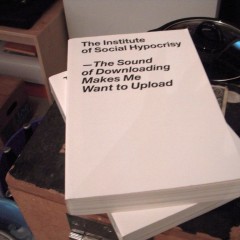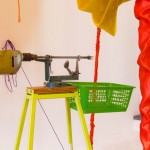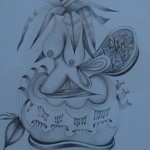The virtual molten rock slips out from under my feet at that jewelbox of a gallery, Rebekah Templeton. I haven’t got a safe piece of ground to stand on there.
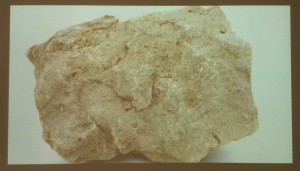
I’m there visiting Holodeck, a small exhibit of five pieces by Derek Frech, who is one of the directors of Extra Extra Gallery, Philadelphia’s hot spot for Internet art.
Holodeck, named after Star Trek’s virtual-reality zone, imagines a sci-fi world where reality is a cyber-y construct–a place for yearning for the good old real days. Frech conducts a philosophical inquiry into the nature of nature that manages to evoke Frederick Church, Tony Oursler and cheesy video Christmas fires in one fell swoop. When most other artists are barely dipping their toes into our lives online, Frech has created elegant pieces whole-ly of the internet and technology, reflecting on a “reality” in which cyber nothingness and the somethingness of meaningfulness collide!
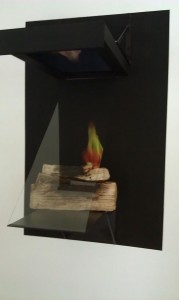
The philosophical underpinnings of this show have something to do with whether a virtual world is a real experience–or a real anything, let alone a work of art. A fire, a Venn diagram, a “moving” ocean, a flowing rock all question our experience of experience–at the same time as they deliver experiences.
But Frech takes his questioning farther than simulacra of the comforts of home. That molten rock, Metamorphoses of Limestone into Marble, is a sort of tipping point in my mind. Frech’s rock (the piece made me think of Tony Oursler’s morphing heads) morphs, heaves and flows, creating an uncertainty that shakes up any dream we may have that we will be comforted by the new faux Sublime. (In comparison, the old faux Sublime–I say faux because a picture of Grand Canyon is not Grand Canyon– was pretty safe and comforting).
Our current reality seems a lot more like Frech’s shifting rock, what with fracking and destructive weather forces undermining the familiarity of a glorious nature.
Furthermore, cyberspace and a scary future are not Frech’s only subject here. He creates in real space a sort of hearth, with real charred logs on a shelf, and a tilted glass which reflects fire (from a moving image on a screen above). The flame reflection licks and dances like a real flame atop the charred logs. The Payne’s Ghost technique works beautifully here, and there’s so much concrete reality in the construction that the faux fire feels like it crosses over into heat. This piece would be great in any house that needs the visual focus of a hearth–plus you can run it in summer without overheating the house!
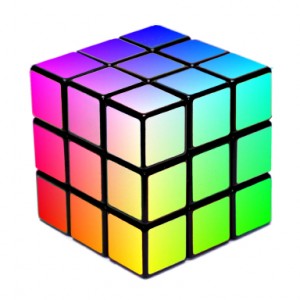
Frech (in collaboration with Bob Myaing) animates a Sugimoto photograph in a gif file that layers the original photograph in slightly different positions to create the illusion of moving water. The illusion is fun, the Sugimoto photo suitably sublime. But the sales plan makes this piece fly ahead of the art-world marketing curve–
The gif is a projection from a dedicated internet website. And the buyer must sign a contract agreeing to maintain the file on the site. The buyer is also contractually obligated to pass the contract and the obligation forward in the event of resale, on into the future. This tickles me in part because Frech solves a thorny problem of how to handle and sell internet art. Thereby Frech also extends his discourse on the nature of reality into the nature of ownership, and the nature of the future and the nature of art.
Ideas are one thing and execution is another, and here again the artist (and the gallery) get high points for having all the technology functioning on the day I dropped in (unannounced). Clearly Frech is more ready for the future he envisions than nearly every other techno-wizardry artist I have seem in galleries, where half the technology-based art is down most of the time.
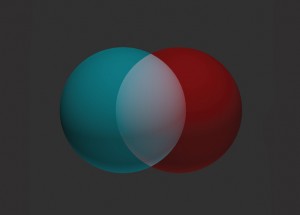
I suppose in this context it’s worth mentioning that the Venn Diagram in 3D piece, which comes up short in its visual effects, is a hilarious improvement on the MasterCard logo and makes a great logo for the show, especially now that we are entering the season of perpetual buying. (The 3D element is a bit less than–more of an idea than a fact).
Speaking of sales, Frech is selling multiples of RGB Rubik’s, an altered Rubik’s cube for $40. The funny thing about this toy is that this one is way harder to solve, with its half-tones and hemi-semi-demiquavers of cyber colors expanded to 3-D pixeloids. Think of how many hours of puzzle pleasure as well as hours of inspiration you–or your giftee–could derive from this!
Holodeck runs through Dec. 17, 2011.



